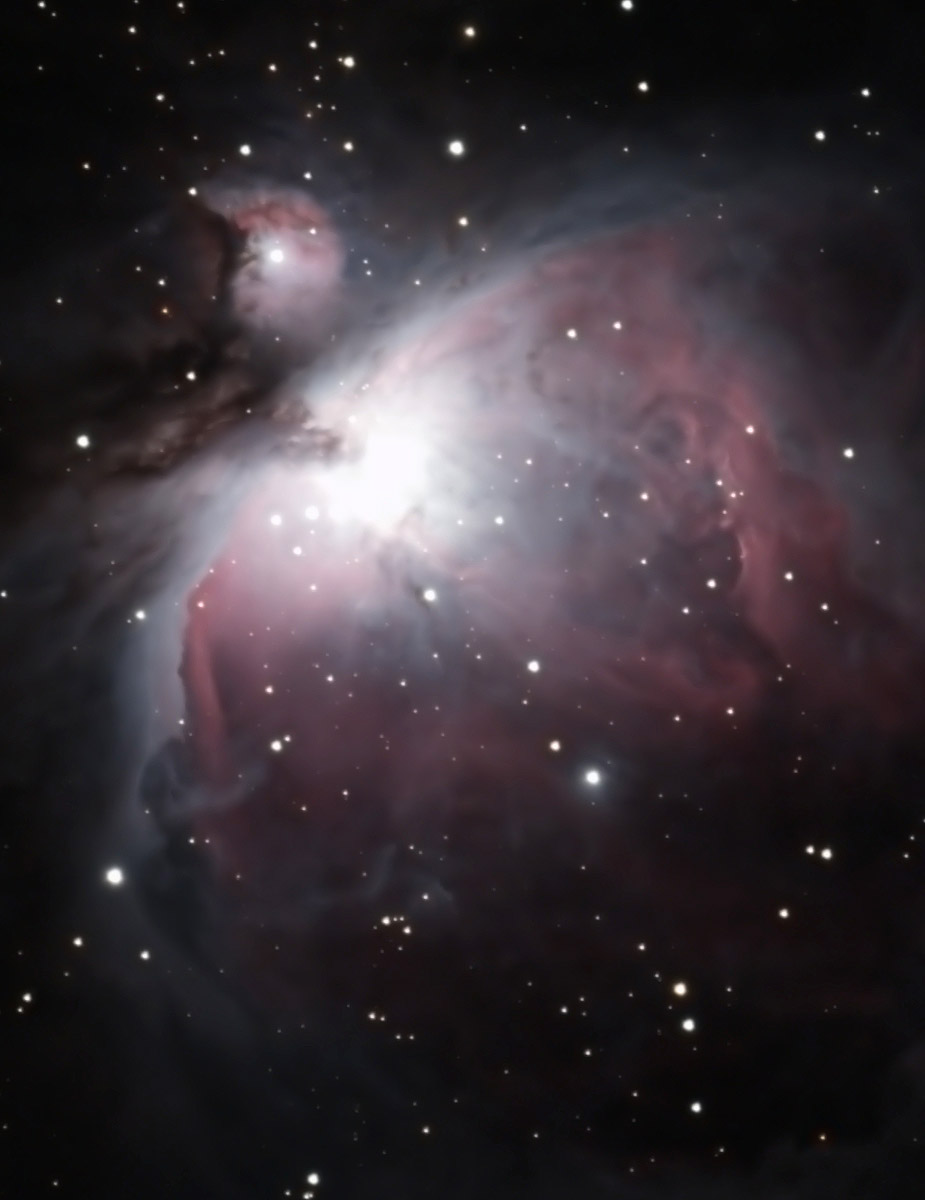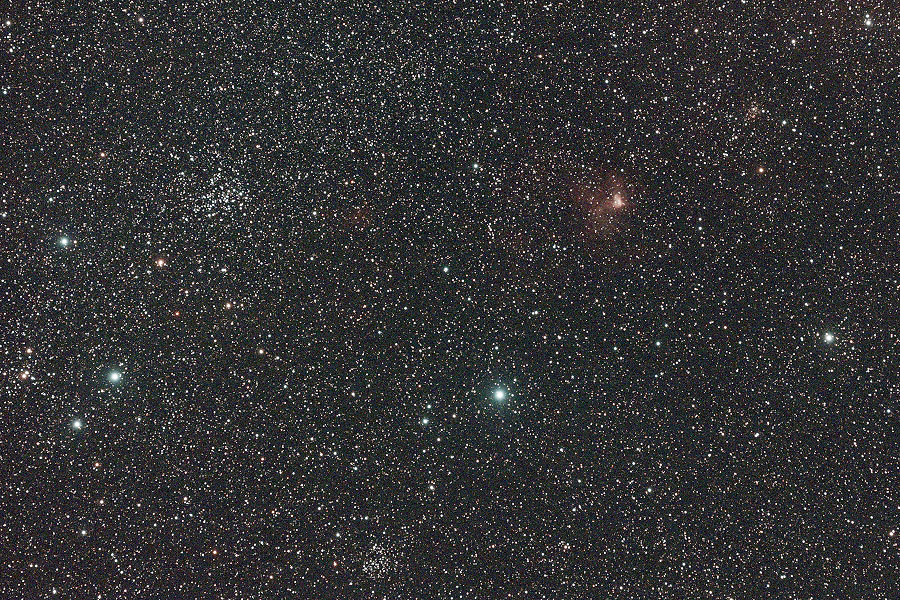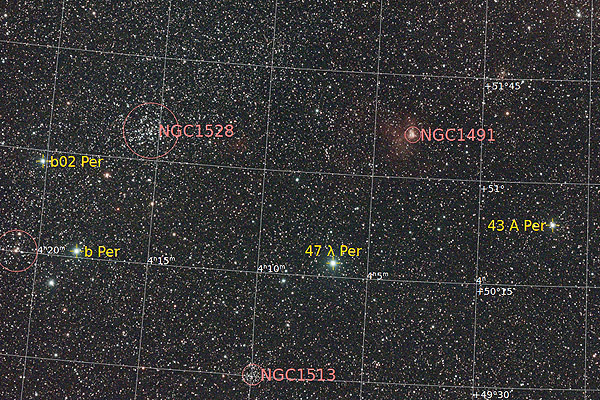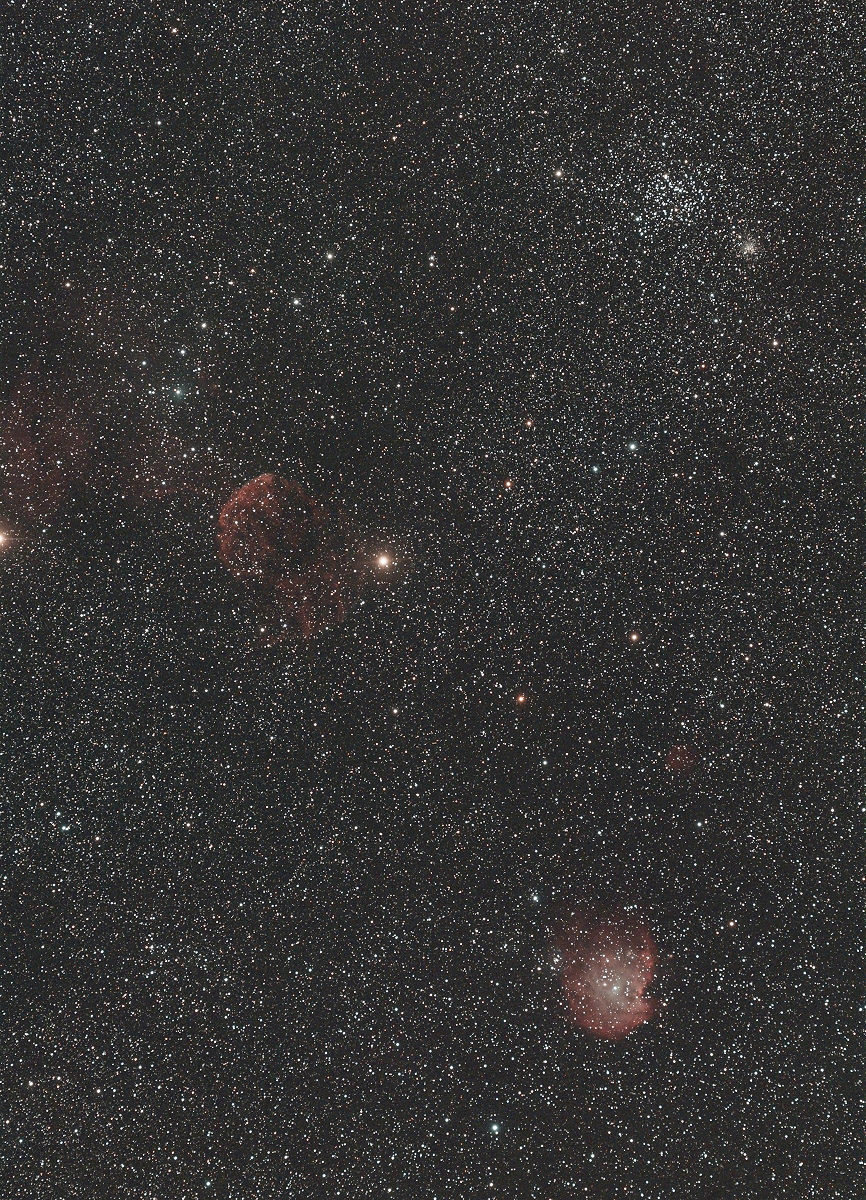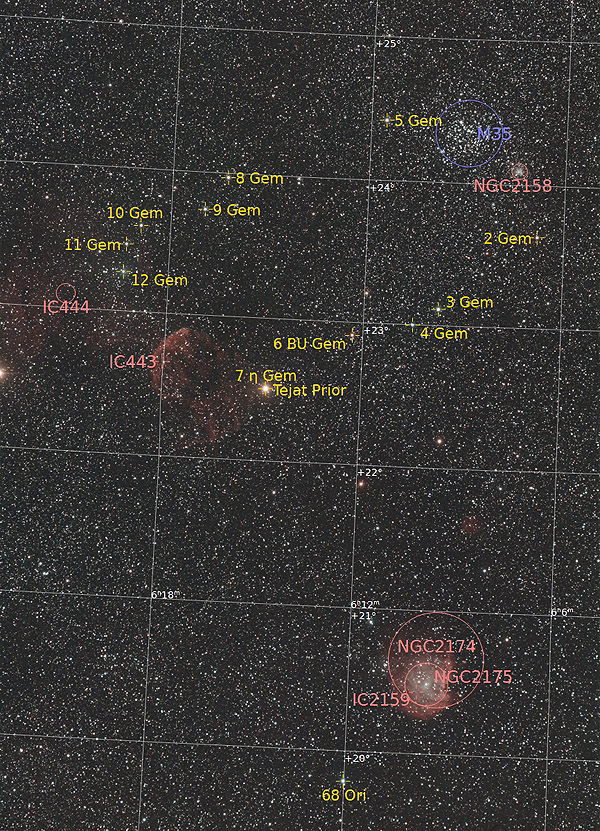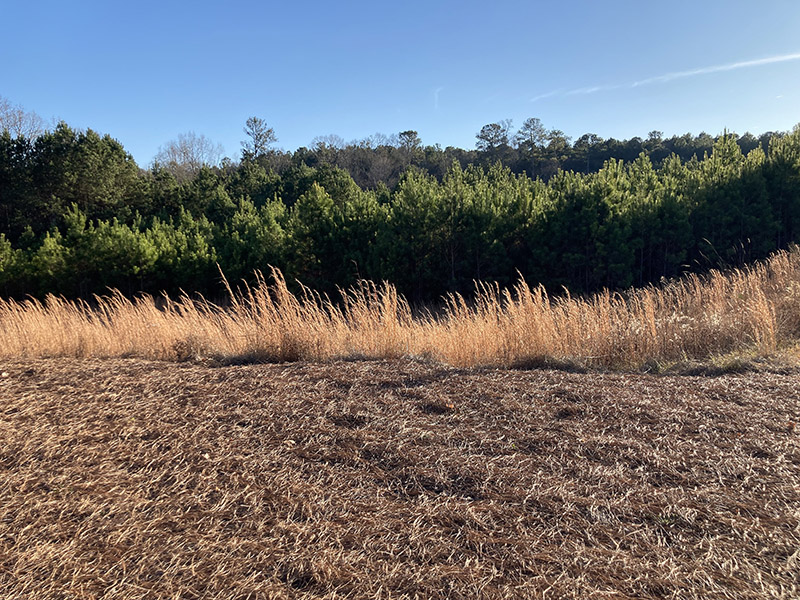2024
January
23
|
Why do musical notes start at C rather than A?
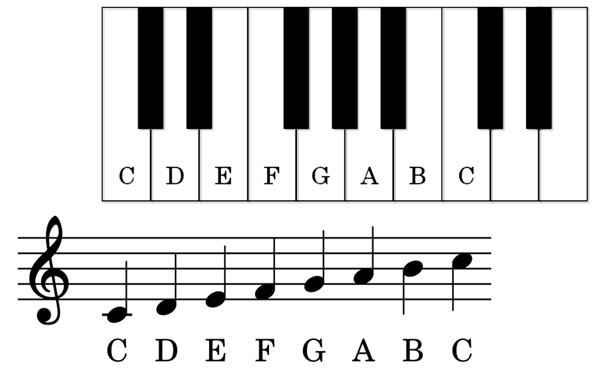
I got curious about something... and dug up the answer... and decided to share it with you.
If you ask a musician for a scale, and don't say what scale, you'll probably get a C major diatonic scale,
C-D-E-F-G-A-B-C.
That is the simplest scale to play on the piano, the first one taught to beginners,
and the scale used in the notation for transposing instruments that actually play in a different key,
such as many trumpets and clarinets.
So why doesn't it start with A? When they were giving letters to notes, why not start at the
beginning of the most common scale?
I started looking for answers, and someone suggested it's because the A minor scale, which uses
the same notes but starting on A, must have been considered more important or more fundamental way back when.
But the actual answer is simpler and goes back to about 520 A.D. Back then, Boethius, passing along
Greek concepts of musical harmony, described a series of 14 notes, A-B-C-D-E-F-G-H-I-K-L-M-N-O. (No J because
he was writing in Latin.) These were apparently the whole range of notes used in music at the time
(mostly singing). The lowest one may or may not have been our A. But the key point is,
A meant the beginning of the range, not the beginning of the scale.
At least, several commentators say this. I've looked at Boethius' Latin text (see p. 314 of that scanned book) but have not had time to take
in all his terminology; it looks to me like he is writing about harmony across intervals.
Maybe I'll go to the library when time permits.
Permanent link to this entry


|
2024
January
22
|
Two triumphs
Melody's home
Melody was discharged from convalescent care today and is now recuperating at home.
Sharon and I are taking care of her. We are delighted to have her back!
FormFree Passport and RIKI are live
FormFree's Passport, a product that relies
on the RIKI ability-to-pay scoring method that I had a large role
in developing, is now actually open to a few customers.
Now the fun begins!
Permanent link to this entry


|
2024
January
13
|
Meet Maple, formerly Suni

Today Sharon and I went to Gainesville to meet a dog she had applied to adopt,
and they said she had been approved to take the dog home, so we did.
This is Maple, and so we end the first few weeks in about 20 years
that we haven't had a dog in the house.
She was born September 10 at Evelyn's Place Rescue,
which I can only describe as a very good canine rescue organization.
Maple arrived already housebroken and crate-trained, with several immunizations done,
and with a voucher to cover a vet who will spay her, give her a rabies shot, and microchip her
in about a month.
She's good company.
Permanent link to this entry
A closer look at NGC 1491
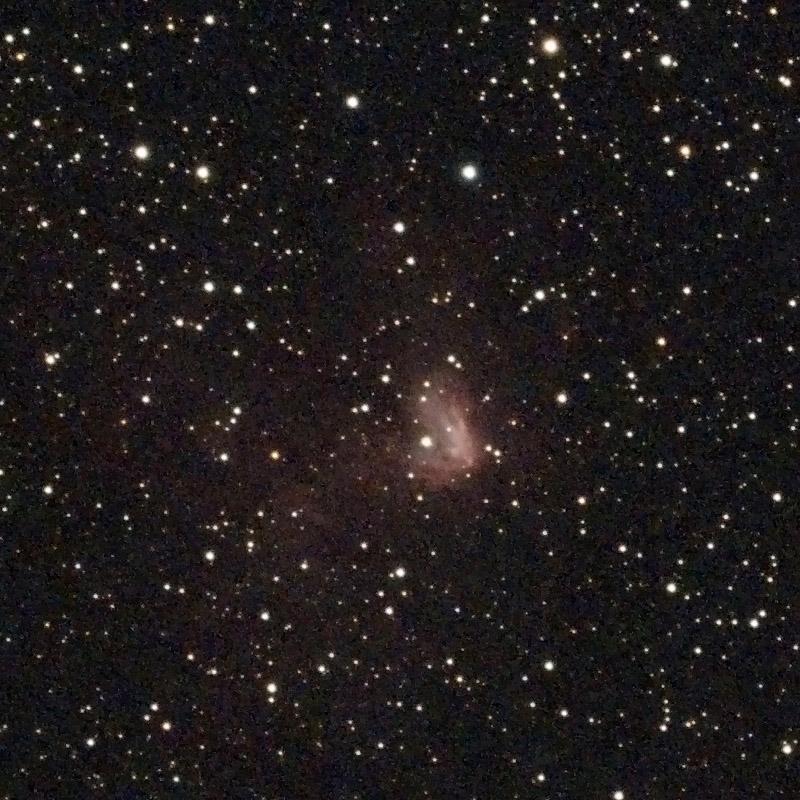
Two nights ago (January 11) I got out my small refractor
and photographed NGC 1491 again. This is the central part of the picture at nearly
full resolution. Clearly, this still isn't enough, and I need to use the Celestron 8 EdgeHD.
Someone has dubbed this object the "fossil footprint nebula"
because of its shape. It is simply one more of the hydrogen-alpha regions that are
visible in the northern Milky Way, and through which I've been trekking for
a few months now.
Stack of 45 2-minute exposures, AT65EDQ (6.5-cm f/6.5) refractor, no filter, Canon 60Da,
ISO 800, Losmandy GM811G mount, PHD2 and N.I.N.A. software.
Permanent link to this entry
The Orion Nebula up close
I photograph the Orion Nebula (M42) every year, whether it needs it or not,
and here is this year's attempt.
I used the same equipment as with NGC 1491 but could only use 24 of the 48 exposures
that I took because the field was so plagued with satellites.
Not Starlink — just the geosynchronous satellites above the equator, which, as
seen from here, pass right through this field.
This, again, is the central part of the picture cropped. Scroll through and enjoy the scenery.
|
2024
January
9
|
Melody's progress
This evening Melody was able, for the first time since her injury,
to stand up and give me a hug. She still can't put much weight on the
bad hip, but she can stand up, use a walker, and transfer into a wheelchair.
This is day 15 after the fracture, about 1/3 through the healing process.
She is still at The Oaks, but we hope to bring her home soon.
Permanent link to this entry
The smart-telescope revolution
A couple of months ago I wrote about smart telescopes
(robotic telescopes), new self-contained systems that do astrophotography
without additional equipment, under the control of a built-in computer.
You put the telescope on its tripod, and it automatically sights some stars,
aligns itself, and then photographs the objects you collect.
The mount is alt-azimuth and the exposures are very short but numerous.
The result is what I would describe as mid-level amateur astrophotography,
plenty good enough for some kinds of science as well as for enjoying the scenery.
So far, these have been positioned almost as novelties; they come from manufacturers
that many amateurs haven't heard of. Yesterday, however, the leading telescope
company, Celestron, announced a smart
telescope called the Celestron Origin. It has more optical horsepower than its
predecessors — it is a 6-inch corrected Schmidt camera. And there are rumors
that it can be adapted to more advanced techniques, such as converting the mount to
equatorial and adding an autoguider.
This development is revolutionary. Until now, astrophotographers' telescopes have been
component systems — we choose the telescope, mount, camera, computer,
and software separately
and figure out for ourselves how to get them to work together.
A smart telescope is "born knowing how" to do astrophotography; it works right out of the box.
If the price seems high, that's offset by the fact that you don't have to buy anything else
to get it going.
And this development has made some amateurs very uneasy.
For about the first
half century (about 1960 to 2010), amateur astrophotography has meant trying to figure
out ways to get any worthwhile results within a level of expense and effort that
an amateur could manage. (Professionals, and amateurs with professional equipment
such as Hans Vehrenberg, did very well, but the cost and workload were tremendous.)
In the past few years, some things have really come together.
Although we still put together our systems out of components, it is much easier to
get reliable results. Things work and are affordable. Instead of
testing ordinary telephoto lenses one by one, for example, I was able to buy
a special 200-mm f/4 lens designed for astrophotography,
and it works beautifully. Although I still use a DSLR, dedicated astrocameras
have become lower-priced than DSLRs, and I'm about to take the plunge. Computer interfaces and
software have become much better. And computerized equatorial mounts have matured,
together with our knowledge of how to use them.
It's time to do more than just select the best components.
It's time to build what industry calls turnkey systems that are complete and
ready to use right out of the box.
That's what smart telescopes are.
Celestron and others have engineered ready-to-use robotic telescopes from the ground up.
Their time has come.
Apart from the obvious, they have some surprising advantages.
Being photographic rather than visual, they make it possible to study nebulae and galaxies
under a bright city sky.
And they are ideal for science teachers, who know the science but cannot practice amateur astronomy
enough of the time to build up experience with a conventional telescope.
But some people hate them!
I've heard a lot of disparagement to the effect that "it's not really astrophotography," with the
hidden meaning, "I did it the hard way and resent people having it any easier."
Smart telescopes will not turn people's attention away from astronomy.
They'll turn their attention toward it!
Looking at an image of M8 and trying to figure out the significance of small dark areas
is astronomy.
Updating ASCOM drivers and choosing USB cables is not.
Many of us love astrophotographic technology so much that we aren't going to leave it.
For us, I think there is a real need to build in manual control and versatility.
The robotic telescope is born knowing how to do a lot of things, but those shouldn't be
the only things it can do. Let us use more advanced methods when we want to.
Think about auto-exposure, auto-focus SLR cameras — they still have
all the manual adjustments! That is why I'm hopeful that the Celestron Origin has an
upgrade or advanced-use path that earlier smart telescopes have not had.
I can envision a day when even component systems come ready-to-use; that is, they arrive
as smart telescopes made of user-selected, compatible components,
like component audio systems, rather than as engineering
puzzles for the user to solve. The current situation is unsustainable.
If we were honest, we would admit that
too much of our gear still looks like digital retrofits of 1980s film astrophotography setups.
And the constant churning of the control software, while exciting, needs to settle down.
I don't want to have to learn new software every year.
Bottom line: I am not the least bit resentful that the next generation of
astrophotographers are going to have a much easier time than I had.
I am glad to have had at least a small role in laying the technical groundwork
that brought us to this day.
Permanent link to this entry


|
2024
January
5
|
Report from the home front
Melody is doing well, still staying at The Oaks and receiving lots of physical therapy.
Today she had a check-up with an orthopedist, and it went well.
Full recovery will take a couple of months.
I, however, am having a bout with the flu. Since I'm well vaccinated, I expect this to
be brief, as it normally is. (I haven't had a full 2-week case of influenza in many years.)
Of course, it could be COVID; this morning's test was negative but I'll try again the
next day.
I should have known something was wrong when the outside air (38 F, +3 C) felt absolutely
arctic during last night's astrophotography session. Fortunately, I was not out in it very
much, controlling the camera and telescope from indoors.
The flu, or whatever it is, means I can't go see Melody, and I had to send Sharon out by Uber (because of her
shoulder problem, she does not drive). But that was arranged successfully.
Update: The flu, or whatever it was, lasted only one day.
Almost every year I have a very short case of the flu, sometimes as much as three days,
never the classic two weeks any more.
Maybe my immune system has learned some new tricks,
or maybe all these vaccines are working.
Permanent link to this entry
NGC 1491
Last night I continued my exploration of the winter Milky Way with my 200-mm f/4 Askar lens,
SkyGlow broadband nebula filter, Canon 60Da camera, Losmandy GM811G mount, iOptron iGuider,
and PHD2 and N.I.N.A. software. The last few times I used this lens, I just relied on the mount
to track accurately; this time it was autoguided, and every single exposure was usable.
I could monitor and remote-control the process from inside the house.
Here's a stack of 51 2-minute exposures at ISO 800 of the nebula NGC 1491 and
some star clusters:
|
2024
January
1
|
Joke or superstition?
Mercury in retrograde disrupts electronics?
The Old Farmer's Alamanac seems to say,
and some people believe,
and others say facetiously,
that Mercury in retrograde disrupts communications and electronics.
Curiously, I have not found this in any electronics engineering handbooks.
Apparently it is unknown to the people who actually build and test
communications equipment and spend their lives figuring out what makes equipment fail.
"Mercury in retrograde" means that the apparent motion of the planet Mercury as seen from Earth
seems to go backward because it's overtaking us in its orbit.
That is the case about 1/6 of the time,
so if you want to experience Mercury in retrograde, you won't have to wait long.
It is not any actual change in the motion of Mercury or the earth.
Both are orbiting smoothly in the same direction all the time.
It's just that when Mercury is on the same side of the sun as we are,
and is relatively close to us, its apparent motion is in the opposite direction
than if it were on the far side of the sun.
(What would you expect?)
And note that this is all about position, not matter or energy. Mercury doesn't emit anything
toward us when it's in retrograde, nor at any other time.
There are astrophysical events that affect radio or communication — notably,
solar flares, solar coronal mass ejections, and even meteor showers. But not Mercury.
Plenty of people see the humor in this, and use "Mercury in retrograde" as an amusing excuse for anything.
Others, hearing it, take it far too seriously.
This isn't the first superstition about computers I've come across.
Remember the Y2K problem? It was true that some software couldn't represent the date properly
after 1999. It was not true that all computers, cars, electric power, coffee makers, etc., would
all be stopped in their tracks on January 1, 2000, by some irresistible cosmic force.
But people wanted to believe that, and they wouldn't believe me when I said I understood
computers and that's not how it was going to be. They wouldn't believe me even when their
actual experience proved me right. Apparently, for some people, reality isn't much
of an obstacle.
Permanent link to this entry
Starting the new year one minute late
[Updated.]
I wish I had been watching TV at midnight; I could have seen what will probably be remembered
as a legendary puzzling moment in TV broadcasting.
Several of my friends were watching the ball drop in Times Square on TV, and also had cell phones
that displayed the accurate time, and noticed something strange — midnight on the TV show,
including the ball drop, was about a minute later than true midnight.
This was seen on both ABC and CNN, via digital TV and, I think, also Internet TV, in more than one
part of the country. The on-screen clock or countdown from the TV broadcaster was synchronized
with the ball drop, not with real time. This indicates that the problem arose after the live
broadcast signal went out from the camera. There are certainly no reports that the ball drop itself
was late.
Further, one friend experienced a delay more like 3 minutes; others reported similar things happening
in Britain and Australia, at midnight in their time zones. But I also got a report of no unusual
delay in a broadcast from the Central time zone.
I know digital TV is inherently delayed, especially when the Internet is involved. At several stages
in the process, the signal is assembled in a computer memory and then doled out after a slight delay; this gives
time to catch up if there is a slight break in the input. This is especially important on the Internet,
which relies on forwarding of data packets, which do not all travel by the same route.
A total delay of 1 to 3 seconds or from these causes is not uncommon.
I'm also familiar with a 7-second delay normally used in live TV broadcasts, to give time to cut the feed
if something uncouth happens, like a gruesome accident or a protester jumping out in front of
the camera.
But a whole minute? From multiple broadcasters? I am wondering what happened.
Was the 7-second safety delay extended to a whole minute because of some specific threat?
I am hoping the broadcasting industry will give us some intelligent comments on this.
By the way, the time on cell phones is accurate, and the time on GPS devices is even more accurate.
It is not subject to unpredictable delays.
Permanent link to this entry


|
|
|
This is a private web page,
not hosted or sponsored by the University of Georgia.
Copyright 2024 Michael A. Covington.
Caching by search engines is permitted.
To go to the latest entry every day, bookmark
https://www.covingtoninnovations.com/michael/blog/Default.asp
and if you get the previous month, tell your browser to refresh.
Portrait at top of page by Sharon Covington.
This web site has never collected personal information
and is not affected by GDPR.
Google Ads may use cookies to manage the rotation of ads,
but those cookies are not made available to Covington Innovations.
No personal information is collected or stored by Covington Innovations, and never has been.
This web site is based and served entirely in the United States.
In compliance with U.S. FTC guidelines,
I am glad to point out that unless explicitly
indicated, I do not receive substantial payments, free merchandise, or other remuneration
for reviewing or mentioning products on this web site.
Any remuneration valued at more than about $10 will always be mentioned here,
and in any case my writing about products and dealers is always truthful.
Reviewed
products are usually things I purchased for my own use, or occasionally items
lent to me briefly by manufacturers and described as such.
I am no longer an Amazon Associate, and links to Amazon
no longer pay me a commission for purchases,
even if they still have my code in them.
|
|







